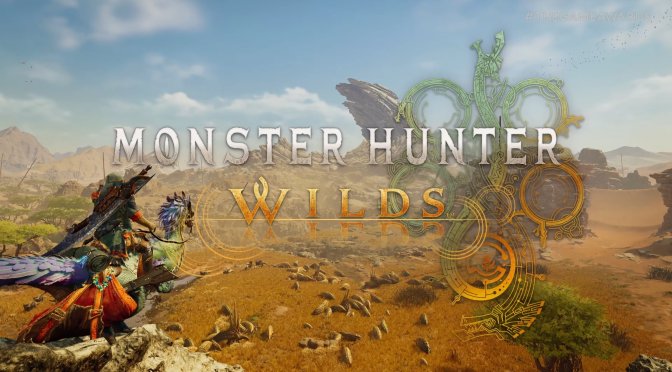Capcom has just launched the Open Beta phase for Monster Hunter Wilds on PC. The game is powered by RE Engine, the same engine used in Dragon’s Dogma 2. And, in September 2024, Capcom shared some really high PC requirements for this title. So, time to find out what PC you’ll need in order to run the game with 60fps at 4K/Max Settings.
For these early 4K benchmarks, we used an AMD Ryzen 9 7950X3D with 32GB of DDR5 at 6000Mhz, and the NVIDIA GeForce RTX 4090. We also used Windows 10 64-bit, and the GeForce 566.03 driver. I know there is a new driver for the game. Still, overall performance seemed already great. Moreover, we’ve disabled the second CCD on our 7950X3D.
Monster Hunter Wilds does not feature any built-in benchmark tool. So, for our tests, we used the main HUB area. This appears to be the most demanding area in the game. As such, it will give us a pretty good idea of how the rest of it performs.
Capcom has added a lot of graphics settings to tweak. PC gamers can adjust the quality of Textures, Fur, Meshes, Grass/Tree and more. The game also supports NVIDIA DLSS 3.5, AMD FSR 3.0 and Intel XeSS 1.3. There is also support for Frame Generation for both NVIDIA DLSS 3.5 and AMD FSR 3.0. Lastly, the game does not have any Ray Tracing effects.
At Native 4K/Max Settings, the NVIDIA GeForce RTX 4090 is unable to come close to 60fps. Although the MHW does not have any RT effects, it runs with a minimum of 47FPS and an average of 50FPS on the RTX 4090.
With DLSS 3.5 Quality, we were able to get a smooth gaming experience at 4K/Max Settings. As you will see, the HUB area is very CPU-bound. This is another reason we’ve decided to use it for our benchmarks. So, make sure to keep that in mind. The open-world areas run faster than this.
Now I know that Capcom has suggested using Frame Generation to hit 60FPS. However, the AMD Ryzen 9 7950X3D can push 60fps most of the time in this CPU-bound scenario. With DLSS 3.5 Quality, we were CPU-bound in the whole HUB area (as our GPU usage was always below 95%). There was also only one scene in which our performance dropped below 60FPS. That scene is at 2:19. With quick mouse movements, the framerate can drop to 55fps in that scene.
The good news here is that DLSS 3.5 Frame Generation offers a nice performance boost. With DLSS 3.5 Quality + FG, we were able to get a minimum of 84FPS and an average of 100FPS. I could not notice any input latency issues, so that’s good news for those who want to get high framerates in CPU-bound areas. Well… that’s provided your base framerate is at 55FPS.
All in all, Monster Hunter Wilds requires a high-end CPU and GPU. Thankfully, those with high-end PC systems will be able to get framerates higher than 60fps. And that’s even without DLSS 3.5 Frame Generation. In short, the game does not perform as badly as Dragon’s Dogma 2 did when it came out. So that’s a relief for all MHW fans. I also did not experience any major stutters while hunting monsters or when exploring the HUB area. However, I did notice some awful texture streaming issues. A lot of surfaces looked really blurry. So, I hope that Capcom will at least fix this.
Capcom will release Monster Hunter Wilds on February 28th. And, to be honest, I don’t expect its final version to have any significant performance optimizations over this Open Beta build. There is definitely room for improvement here. But hey, at least it won’t be another mess like Dragon’s Dogma 2 was.
Stay tuned for more!

John is the founder and Editor in Chief at DSOGaming. He is a PC gaming fan and highly supports the modding and indie communities. Before creating DSOGaming, John worked on numerous gaming websites. While he is a die-hard PC gamer, his gaming roots can be found on consoles. John loved – and still does – the 16-bit consoles, and considers SNES to be one of the best consoles. Still, the PC platform won him over consoles. That was mainly due to 3DFX and its iconic dedicated 3D accelerator graphics card, Voodoo 2. John has also written a higher degree thesis on the “The Evolution of PC graphics cards.”
Contact: Email


